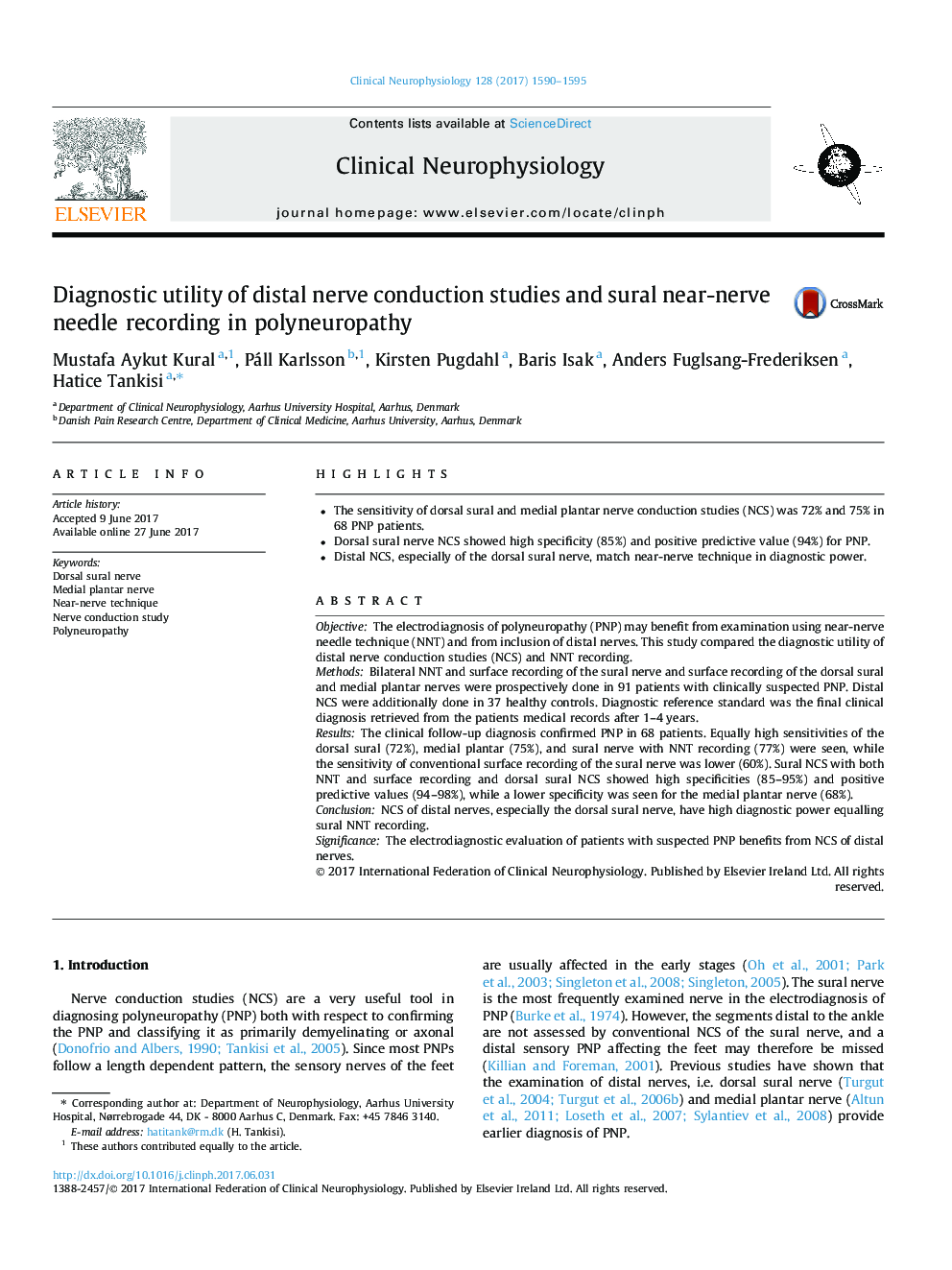| Article ID | Journal | Published Year | Pages | File Type |
|---|---|---|---|---|
| 5627243 | Clinical Neurophysiology | 2017 | 6 Pages |
â¢The sensitivity of dorsal sural and medial plantar nerve conduction studies (NCS) was 72% and 75% in 68 PNP patients.â¢Dorsal sural nerve NCS showed high specificity (85%) and positive predictive value (94%) for PNP.â¢Distal NCS, especially of the dorsal sural nerve, match near-nerve technique in diagnostic power.
ObjectiveThe electrodiagnosis of polyneuropathy (PNP) may benefit from examination using near-nerve needle technique (NNT) and from inclusion of distal nerves. This study compared the diagnostic utility of distal nerve conduction studies (NCS) and NNT recording.MethodsBilateral NNT and surface recording of the sural nerve and surface recording of the dorsal sural and medial plantar nerves were prospectively done in 91 patients with clinically suspected PNP. Distal NCS were additionally done in 37 healthy controls. Diagnostic reference standard was the final clinical diagnosis retrieved from the patients medical records after 1-4Â years.ResultsThe clinical follow-up diagnosis confirmed PNP in 68 patients. Equally high sensitivities of the dorsal sural (72%), medial plantar (75%), and sural nerve with NNT recording (77%) were seen, while the sensitivity of conventional surface recording of the sural nerve was lower (60%). Sural NCS with both NNT and surface recording and dorsal sural NCS showed high specificities (85-95%) and positive predictive values (94-98%), while a lower specificity was seen for the medial plantar nerve (68%).ConclusionNCS of distal nerves, especially the dorsal sural nerve, have high diagnostic power equalling sural NNT recording.SignificanceThe electrodiagnostic evaluation of patients with suspected PNP benefits from NCS of distal nerves.
